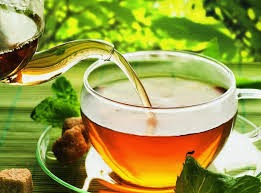Contrary to what many companies would like for us to think, most natural hair products contain the same ingredients and don't vary much from product to product. When you learn what ingredients your hair likes and dislikes, it will become more easier to pick hair care products. You will know that if a product contains a certain ingredient high in the ingredient list, it may or not work well for your hair.
Here is a list of some ingredients, all very cheap and each and can be mixed and matched to suit your hair type. These ingredients are found in almost every type of natural hair care product from leave-ins to shampoos!
1. Aloe Vera Juice
Aloe vera juice is a great pH balancer (pH of 4), and can soothe itchy off balance scalps, add much needed moisture to thirsty hair, and smooth the cuticle. Aloe vera juice is great as a spritz (has a light hold) or as a rinse after using a shampoo with a high pH. It can also be beneficial during the detangling process. You can order aloe vera juice online or get it from your local health food store.
2. Vegetable Glycerin
Vegetable glycerin often gets a bad rap because it is a humectant, and in certain environments can make hair hard, crunchy, or greasy. When used in certain formulations, however, vegetable glycerin can be your hair's best friend, attracting and helping to retain moisture.
3. Tea Tree Essential Oil
If you have scalp problems, let this essential oil become your best friend. One thing that many women complain about is an itchy, dandruff laden scalp. Tea tree oil is a great addition to your routine... add it to shampoos, conditioners, and even alongside carrier oils for a nice scalp massage.
4. Butters
Whether, you opt for shea butter (my love), mango butter or avocado butter, get you a butter and make a mix for your hair. You can use butters as moisturizers (mixed with other ingredients), sealants, etc. The world of butters is endless. You can use them in multiple ways from nourishing, to smoothing, to styling! Buy them in bulk and you can get enough to last at least a year!
5. Olive Oil
Olive oil is one of the best oils hands down. You can use this oil in many ways- - oil rinsing, scalp massages, moisturizing, sealing, and as a styling aide.
6. Coconut Oil
Just like Olive Oil, this oil can become your best friend. It's great for deep conditioning and as a leave in, and can be used to seal in the moisture from your conditioning treatments.This is just a basic list, but once you find out how your hair reacts to these few ingredients, you will be able to quickly decide which hair products are worth your money and which ones aren't. You may not like an ingredient as a leave-in, but find that you love it mixed with your shampoo or rinse-out conditioner. Experiment and remember that using natural hair products doesn't have to be pricey or overwhelming! Keep it simple!










